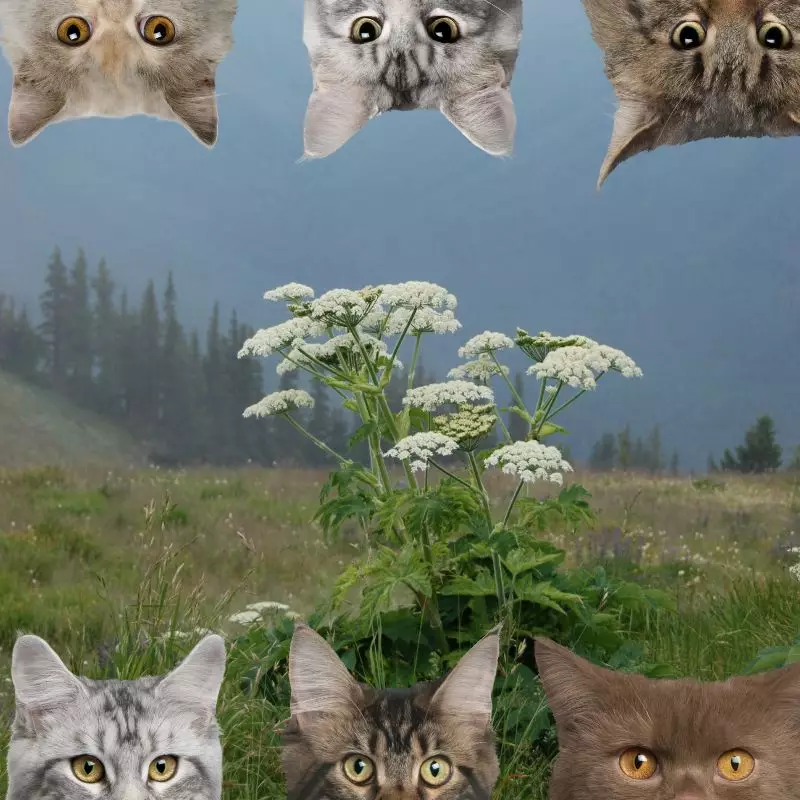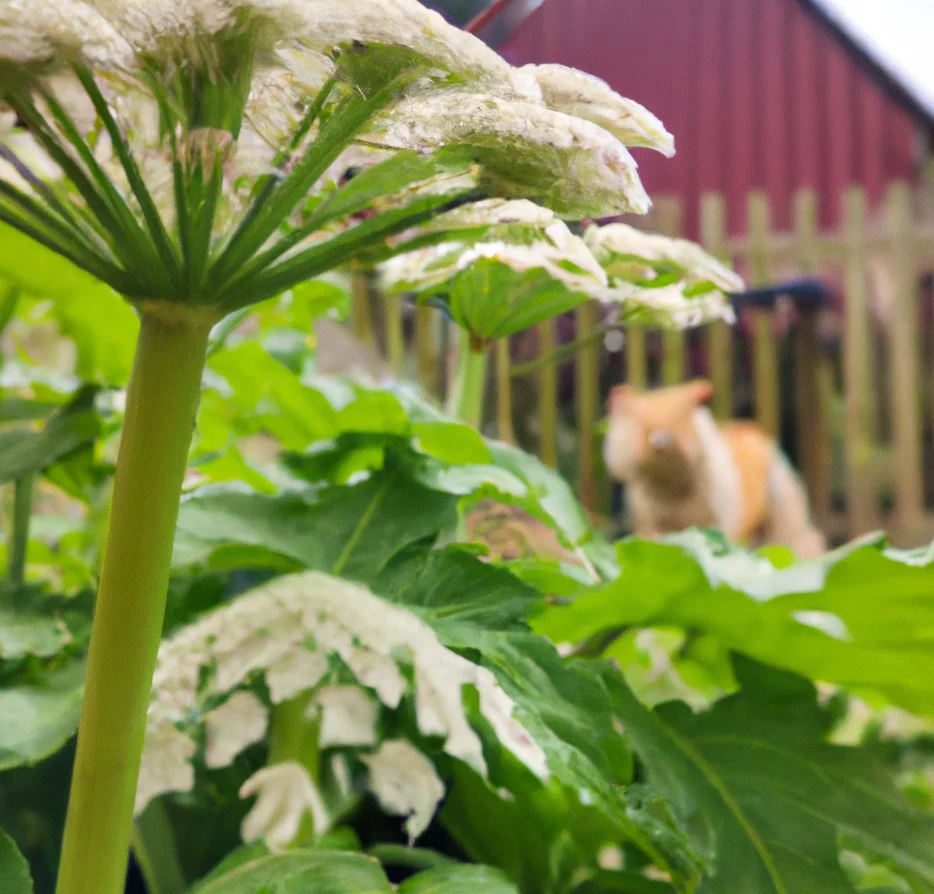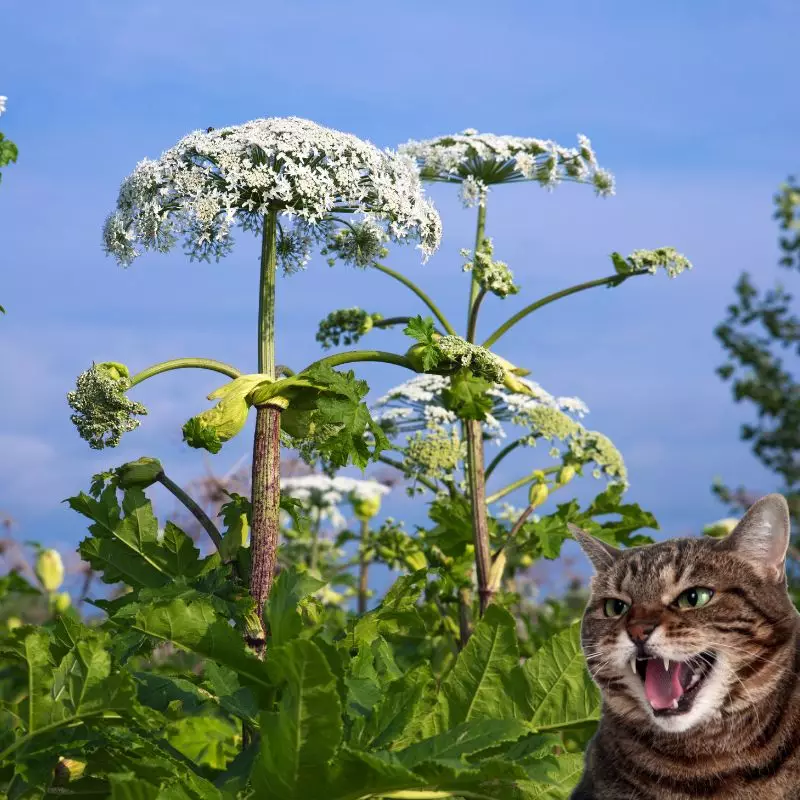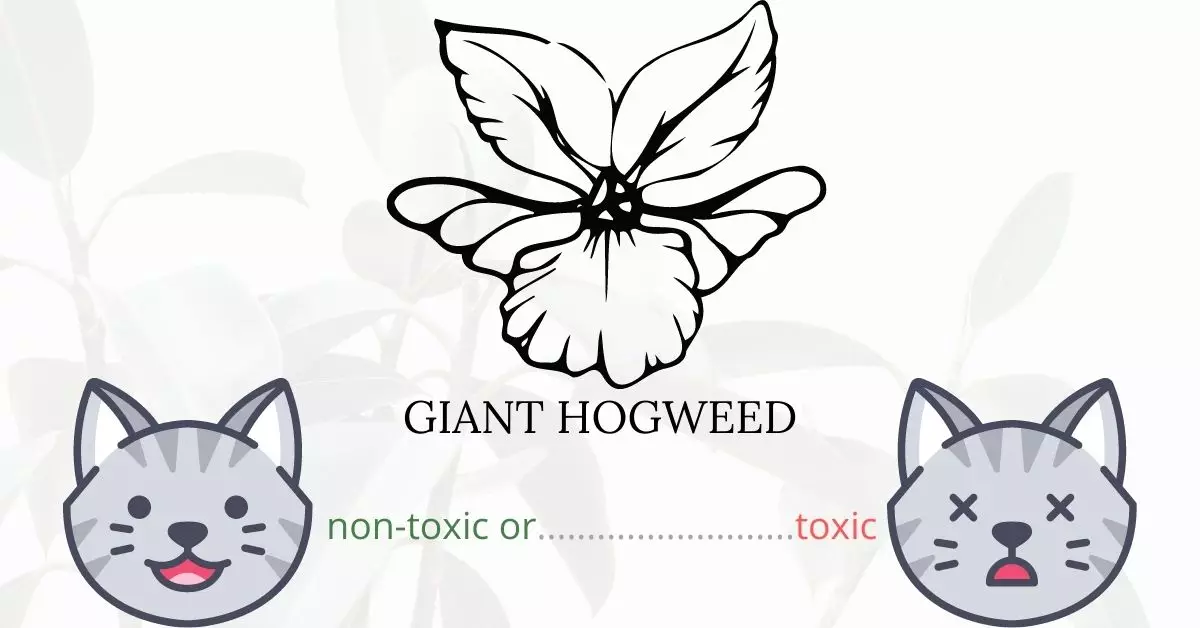Yes, cow parsnip, also known as giant hogweed, is toxic to cats. All parts of the cow parsnip, especially the seeds, contain hazardous substances such as nitrates and furanocoumarins, including xanthotoxin, bergapten, and psoralens. These toxins can be absorbed through the skin or inhaled when a cat comes into direct contact with the plant, with skin absorption being the most common route of exposure. The compounds present in cow parsnip are photodynamic, meaning that they can cause severe reactions in a cat’s tissues when exposed to UV radiation, leading to symptoms like a burning sensation.
This article was penned in collaboration with a team of experienced DVMs (doctors of veterinary medicine). Their invaluable insights and contributions have empowered us to provide accurate and up-to-date information on the potential risks associated with plants, particularly cow parsnip, and their effects on cats. Moreover, to ensure the utmost accuracy, we have researched high-authority websites, including ASPCA and PetMD, regarding every plant discussed in this piece.
Clinical Signs of Cow Parsnip or Giant Hogweed Poisoning in Cats

Exposure to cow parsnip, or giant hogweed, can lead to a variety of symptoms in cats, mainly stemming from the plant’s photodynamic compounds. Here’s a breakdown of the signs and their causes:
- Photosensitization: When cats ingest or come into contact with cow parsnip, the toxins in the plant cause heightened sensitivity to light. This is due to the accumulation of the photodynamic compounds from the plant in the cat’s tissues.
- Affected Areas: Photosensitization mainly appears on parts of the cat exposed to sunlight, such as the skin, ears, muzzle, and vulva. These areas may appear reddened, swollen, or blistered.
- Blindness: Extended exposure or severe poisoning can result in damage to the eyes, potentially causing temporary or permanent blindness. This happens when the photodynamic compounds affect the eyes, especially after UV exposure.
- Cloudy Cornea: The toxins from the cow parsnip can lead to inflammation and changes in the eye’s cornea, causing it to appear cloudy. This is a sign of damage to the eye and needs immediate attention.
- Conjunctivokeratitis: This refers to the inflammation of both the conjunctiva (the membrane that covers the white part of the eye) and the cornea. The inflammatory response is due to the toxins and the cat’s exposure to UV light after contact with the plant.
- Photophobia: Cats that have come into contact with cow parsnip may exhibit photophobia, which is an aversion or sensitivity to light. This arises because the toxins exacerbate the pain and discomfort when the eyes are exposed to bright light.
If your cat shows any of these symptoms after exposure to cow parsnip or any unfamiliar plant, it’s crucial to consult a veterinarian immediately.
First Aid and Treatment of Cow Parsnip or Giant Hogweed Poisoning in Cats

If your cat is showing signs of photosensitization, you should stop exposing him to UV radiation right once. If the cat has recently consumed cow parsnip, the mouth should be rinsed with water and vomiting should be induced to remove any leftover plant material. To bond with toxins and transit them through the gastrointestinal tract without further absorption, your veterinarian may perform gastric lavage and provide activated charcoal. While the effects of photosensitivity last, your cat will need to be kept out of direct sunlight.
Steroids for the eyes, as well as medication to deal with photosensitivity, will be administered. If a skin infection has developed as a result of germs infiltrating open wounds, antibiotics will be prescribed by the veterinarian. To avoid further contamination, an insect repellent designed for wounds may be also recommended.
Recovery from Cow Parsnip or Giant Hogweed Poisoning in Cats

The blisters on your cat’s skin should heal in a few days. However, if your cat’s eye has been damaged, scarring and impairment may be permanent, and his or her vision may be permanently affected. Photosensitive cats should be kept out of the sun until the poisons have passed through the body, which could take several days. Discuss post-treatment care with your veterinarian and ask questions relating to your cat’s recovery.
Prevention of Cow Parsnip or Giant Hogweed Poisoning in Cats
Exposure to cow parsnip or giant hogweed is unavoidable especially if you live near its natural habitat. You can minimize the risk of your cats’ exposure to the said plant by keeping them occupied and safe inside the comforts of your home. Make sure they are confined if you are leaving the house without taking them. Build additional safety fences and nets around your house to limit your cats from starting far from home.
If you love plants but have cats at home, check out these lists:





